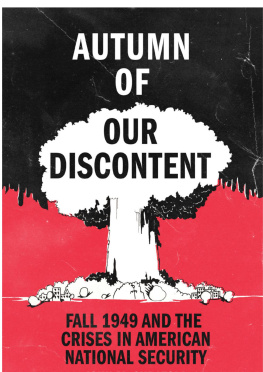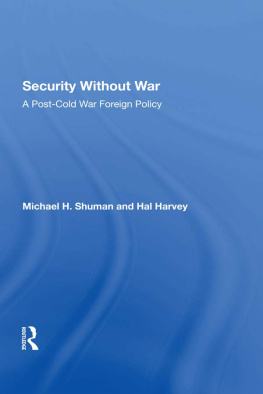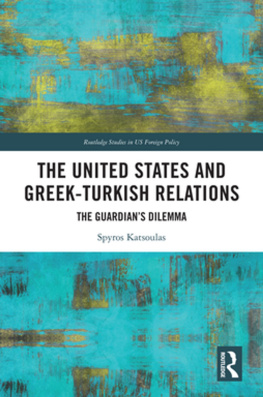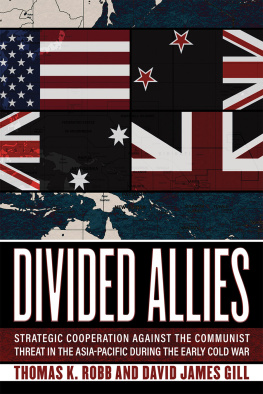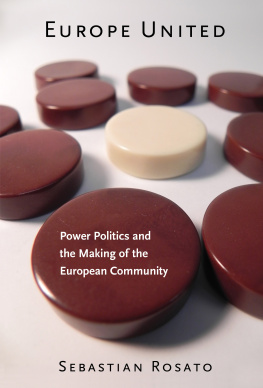First published 1991 by Westview Press
Published 2018 by Routledge
52 Vanderbilt Avenue, New York, NY 10017
2 Park Square, Milton Park, Abingdon, Oxon OX14 4RN
outledge is an imprint of the Taylor & Francis Group, an informa business
Copyright 1991 by Taylor & Francis
All rights reserved. No part of this book may be reprinted or reproduced or utilised in any form or by any electronic, mechanical, or other means, now known or hereafter invented, including photocopying and recording, or in any information storage or retrieval system, without permission in writing from the publishers.
Notice:
Product or corporate names may be trademarks or registered trademarks, and are used only for identification and explanation without intent to infringe.
Library of Congress Cataloging-in-Publication Data
Deitchman, Seymour J.
Beyond the thaw: a new national strategy / by S.J. Deitchman.
p. cm.
Includes bibliographical references and index.
ISBN 0-8133-1108-XISBN 0-8133-1107-1 (pbk.)
1. United StatesNational security. 2. United StatesMilitary
policy. 3. United StatesArmed Forces. I. Title.
UA23D428 1991
355'.033073dc20 90-22132
CIP
ISBN 13: 978-0-367-00402-6 (hbk)
This book is a think piece about national security. Although most of the first draft was written in the fall of 1989, I started it in 1987 and began planning it several years before that. The manuscript has gained perspective over the years, and many of the events of the recent past rendered some of the earlier conception out of date. But the main messages about the breadth of our national security problems, the need for new strategic thinking, and the need to change the form of the armed forces have not changed all that much over the gestation period. The needs were apparent before the events of 1989 in Europe and the Soviet Union, although the perception of the needs has certainly been heightened by those events and by the onset of warfare in the Middle East.
Nevertheless, this has been a difficult book to write.
The rapid flow of events always leads to the risk that what is written may be outdated by the time it is published. Concurrently, many ideas for revising our national security posture, some of them obvious because events lead to new outlooks, have appeared in the past year or two. Much of what is written here, especially about the economy and the developing international geopolitical situation, will be familiar to the well-informed reader. However, most of the national security-related proposals presented in other forums have been treated in a restricted context, without reference to proposals in related areas. It is as though a group of people were setting about building a house, with one designing a bedroom, a second designing a kitchen, a third designing the sitting room, and so forth, without anyone having an overall plan. There is as yet no overall design for the whole house, or thought to its total costthere are only the pieces, being considered separately. But without the comprehensive design, the pieces can't fit together, and we argue about where to put the money we think is available without knowing the size of the overall financial need. The creation of a national security strategy and its implementation can't be done piecemeal, as the nation is going about it today.
Thus, I have tried to synthesize a long-term, broadly integrated view of our national security posture and problems that hasn't yet appeared in the growing public discussions about what world events mean for our national security and national defense. Finally, many of my own notions in these areas run counter to the prevailing climate of opinion and tentative government decision making that is developing in the wake of the fast-moving world events.
This, then, has become the major objective of this essay: to develop a comprehensive overview of our long-term national security and the resources to enhance and maintain it, taking account of the underlying trends in world events. I have tried to create a matrix of strategic thinking about the problems and opportunities that can lead to articulation of a new national strategy and which can help to determine the needed structure of the armed forces within such a strategic framework. I hope, in presenting this work, to advance the necessarily lengthy national process of reaching conclusions about these matters. I therefore hope my readers will "read past" what are bound to be retrospective inaccuracies in allusions to "current" events to what I believe to be new strategic verities and needs that are emerging from those events. Also, I must note that I have borrowed others' concepts more readily from the field of economics than from the fields of international politics, national defense and the development of technology. I have long had some acquaintance but am not really at home in the former, but I have made my career in the latter.
This book develops ideas stimulated by many years of working with and observing national security matters from outside and from within the Defense Department. Some of my sources of facts and other material are noted in the text. Many are listed in the appended Bibliography of some of my readings. I think that in the main my facts are correct; where they are not, I take full responsibility for the errors. The development of the strategic concepts and their extension into the realm of the armed forces are also mine; many of them have been discussed in my earlier writings, some of which are also listed in the Bibliography. Obviously, however, I could not have developed all of the ideas to their fullest extent without the stimulus of countless interactions with others in my field. Those interactions are too extensive to enumerate here or even to remember completely from the dim recesses of the past. Any conversation with a colleague could have led to the kernel of an idea that was later developed to the extent seen here. To all the people I have worked with over the years, in many organizations and countries, I owe a debt of thanks for their contributions to the present work via such interactions.
A few people made contributions that are easily identified, and for which I must express my appreciation specifically Eugene Fubini reminded me forcefully that today's problems emerge from a stream of history, and insisted that the book be placed in a proper historical context. Erland Heginbotham read the entire manuscript, with special attention to economic matters and to America's relationships with the nations of East Asia; he made innumerable suggestions for changes in the draft text in those matters and more generally that helped me feel much more comfortable with what I finally put on paper. The imagery of a great competition between different systems of . And finally in this paragraph, but early in mind, I must express my deepest gratitude to Gen. Andrew J. Goodpaster (USA, Ret.) for his very helpful comments on the manuscript, and for being a strong, needed and most welcome source of inspiration and support for what sometimes appeared to be a discouraging task. Although I sought and received all the advice and data described above, no one but I bears any responsibility for how effectively I used it.



